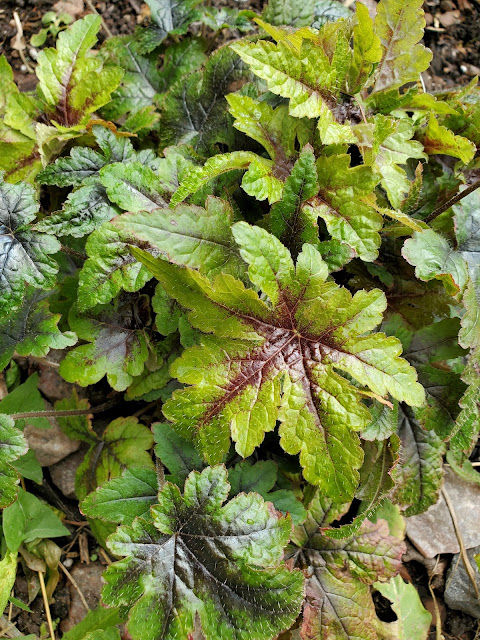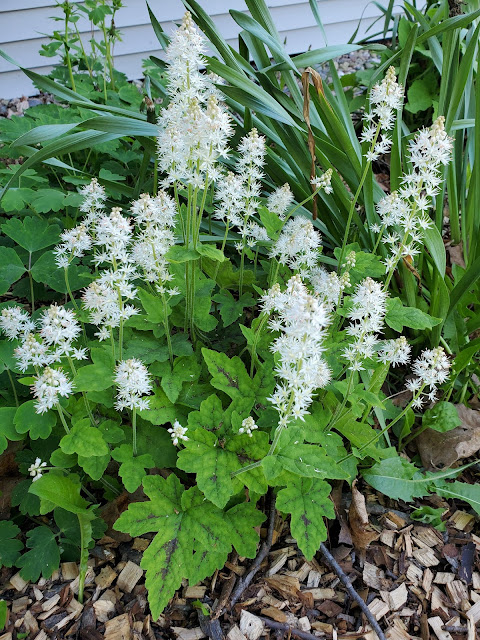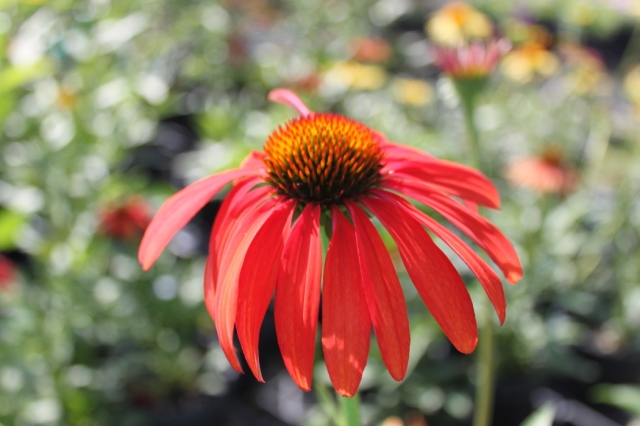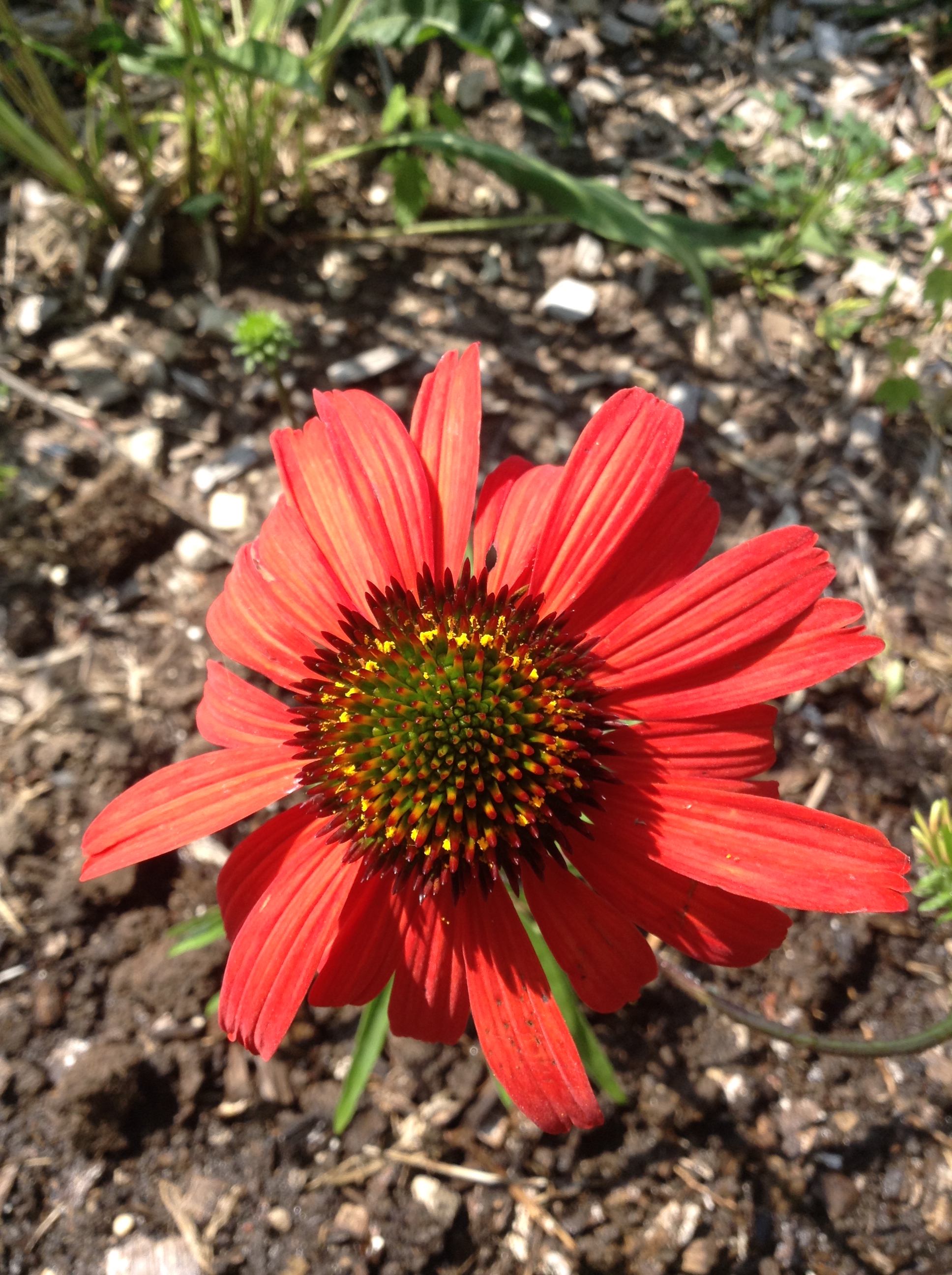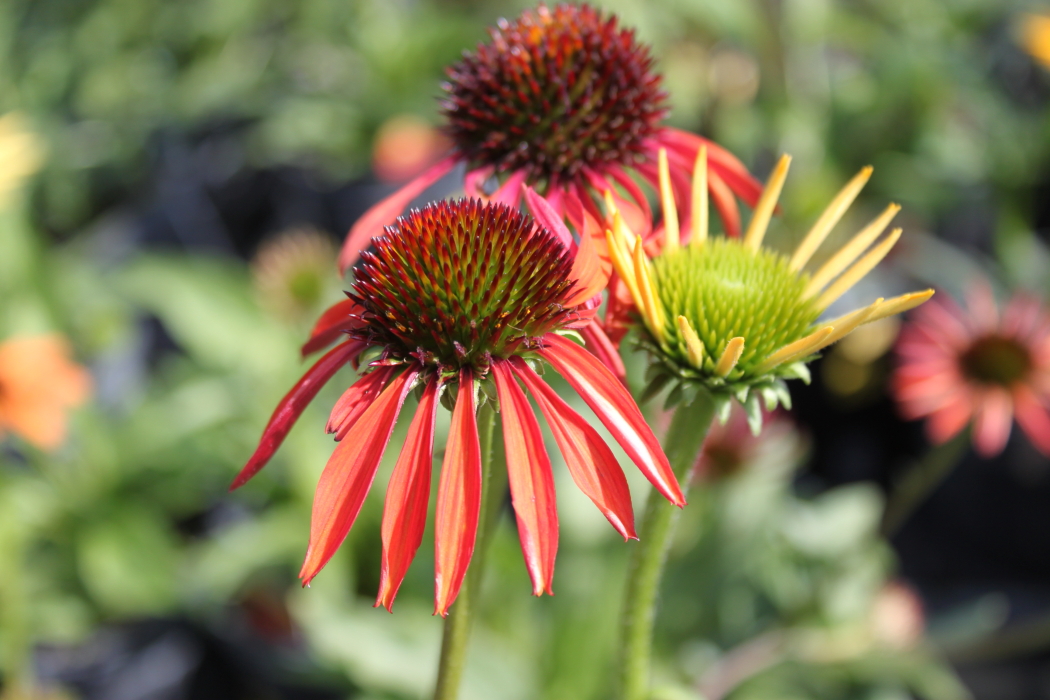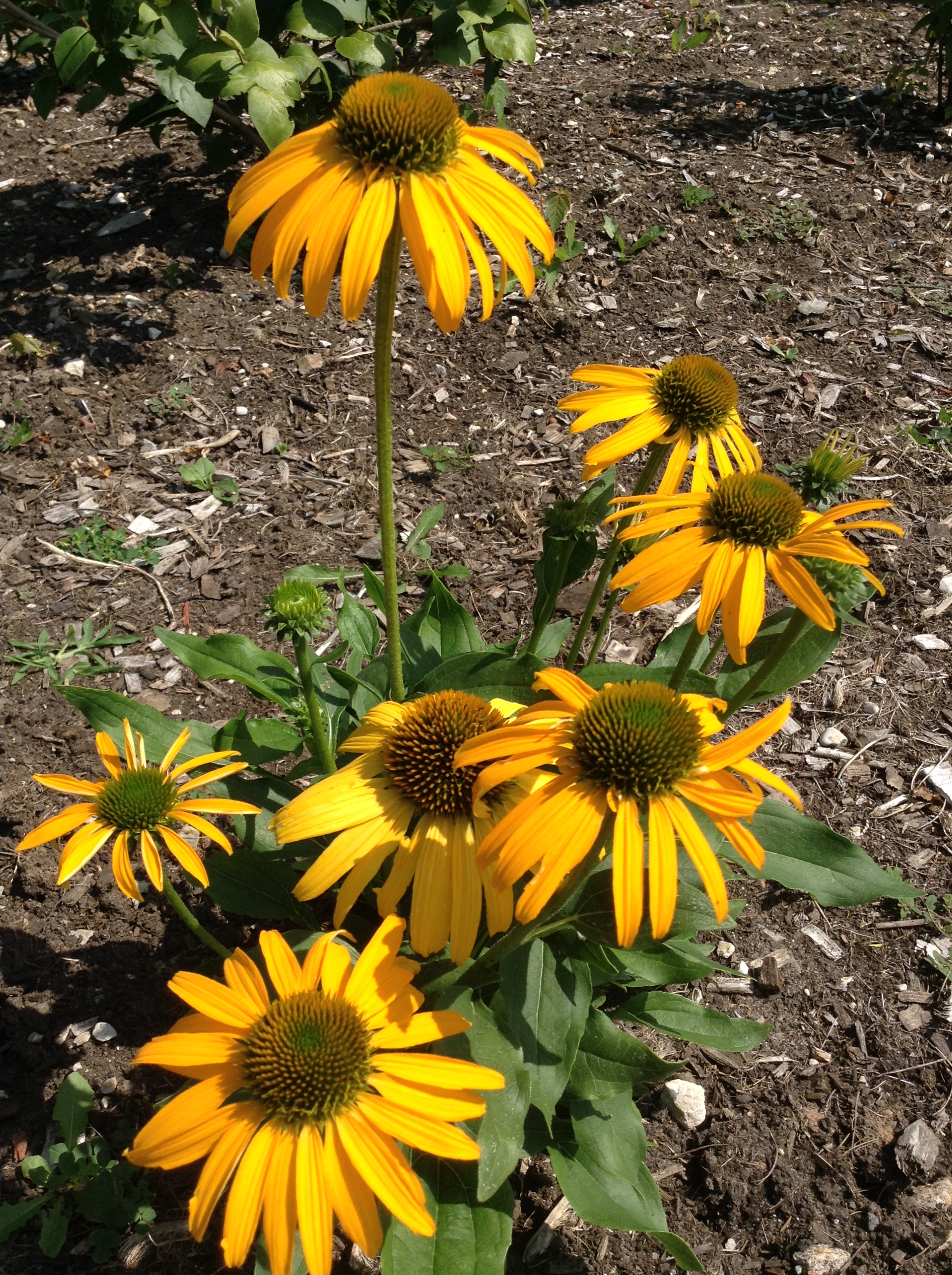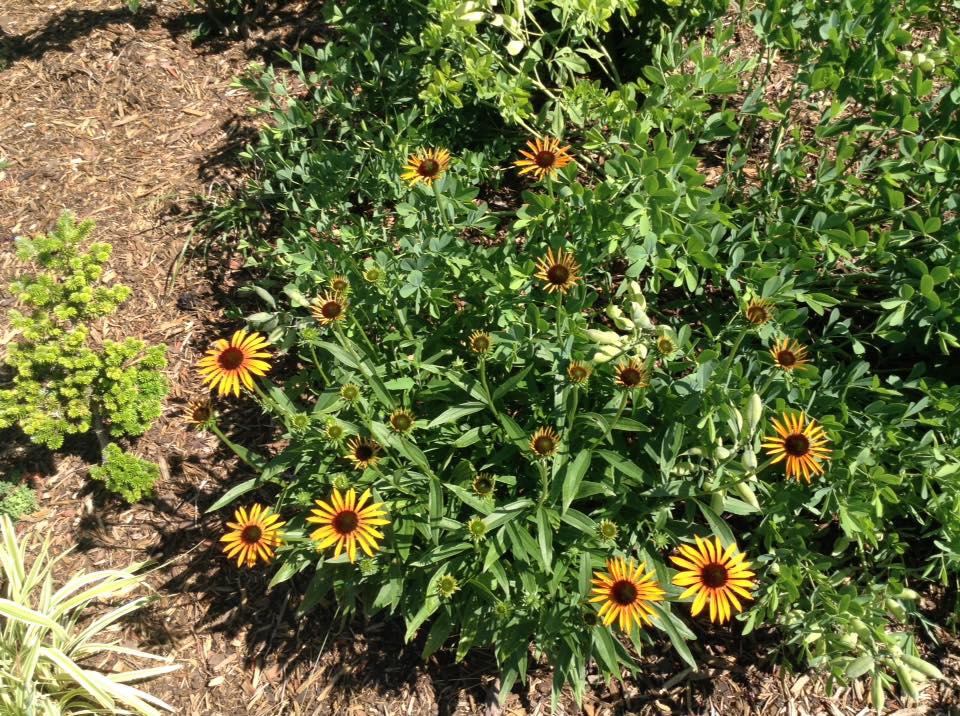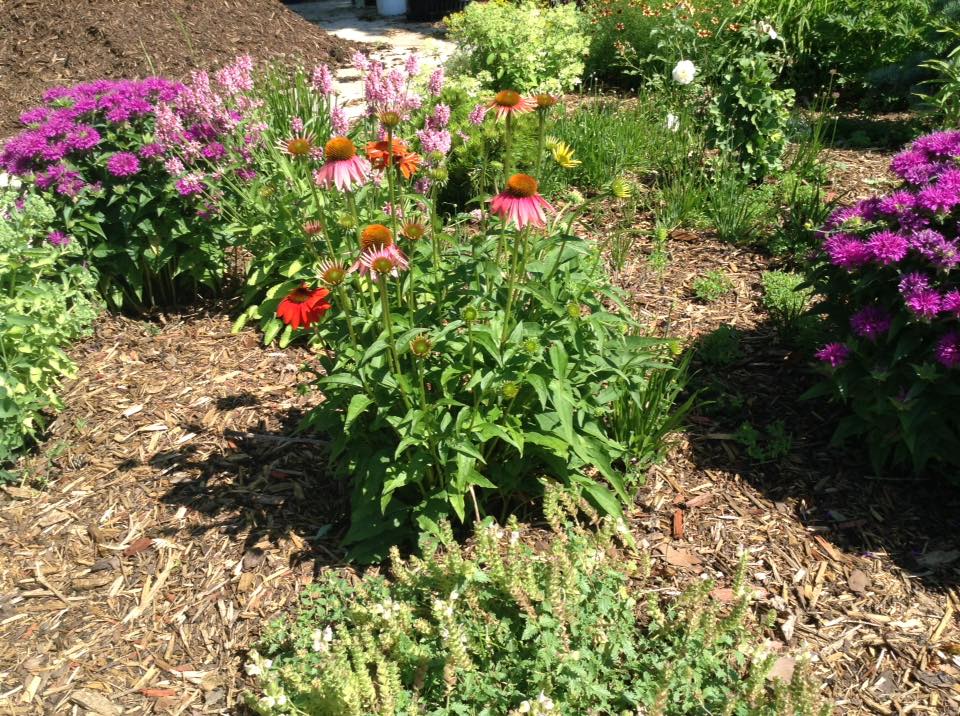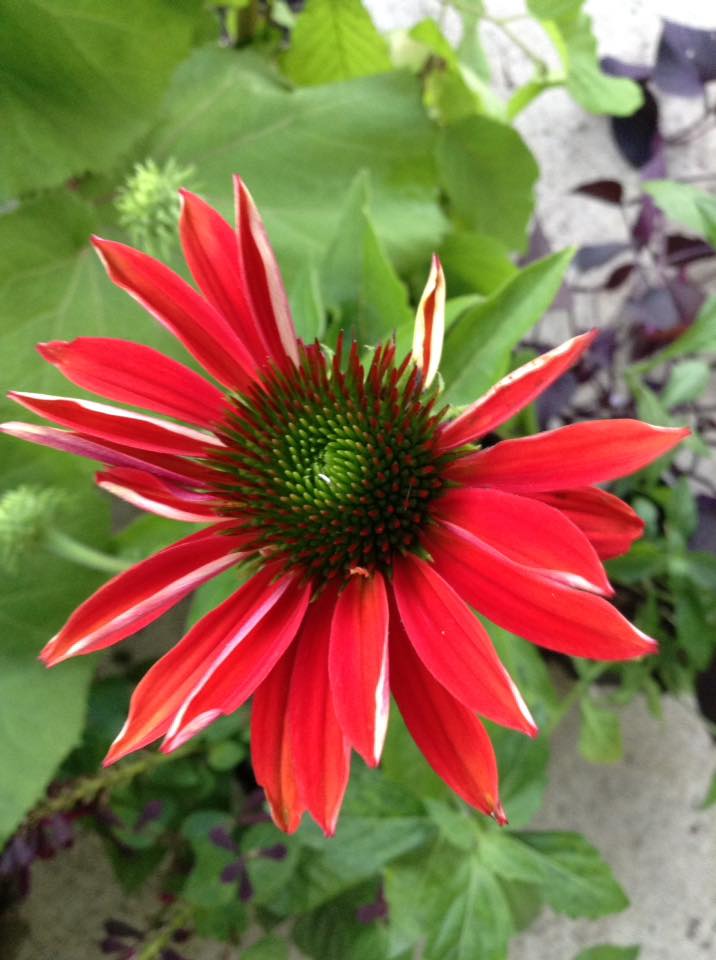I often get asked about groundcovers for shade. There are certainly a lot of choices out there; and while I like plenty of non-native selections, I find myself gravitating more and more to native species and selections of them. Not all of them are suitable for every garden, some definitely want specific conditions to perform well and some are only suited to special uses.
A group that is becoming more and more popular are the sedges of the genus Carex. This is a huge group of plants and not all are great garden plants, but that's ok because we have A LOT to choose from! Just here in Wisconsin we have 167 species and naturally occurring hybrids!
Carex muskingumensis 'Little Midge' is a dwarf selection of a native species that's usually found in wet areas. Despite this habitat preference I've found the species is suited to average moisture conditions. One of the common names of this species is palm sedge, for it's upright whorled stems of foliage. 'Little Midge' is great because it's a very petite form that only grows to be 6" tall or so. I grow a variegated form, 'Oehme', that grows to be about 12" tall. It's a nice accent plant, but it's a bit big for groundcover duty with other perennials.


Carex platyphylla is a broad-leaved sedge with silvery foliage. This species forms loose colonies that intermingle with other plants well. Foliage is evergreen and can be cleaned up in spring. It's very low, generally only to 6" tall with flowering stems that may reach 10". But flowering is loose (first picture above) and airy and is over quickly. I really like blending the broad-leaf sedges with finer textures like ferns or even dwarf conifers. There's even enough texture contrast to blend with finer leaved sedges as well.

Carex pensylvanica is likely the most common sedge in Wisconsin woodlands; certainly the one I've encountered most often anyway. It forms large, loose colonies and has a very wispy natural turf kind of look; very soft and inviting. It plays very well with other robust perennials, pictured above in spring with Jacob's ladder, Polemonium 'Heaven Scent'. I only know of one selection, 'Straw Hat', with flowers that are larger than normal. It does great in average garden conditions.
Carex appalachica, Appalachian sedge, isn't native here in Wisconsin but is found in eastern North America. It looks like a smaller and finer version of C. pensylvanica, but tends to stay put rather than spread. In spring and as young plants it's very upright as pictured here, but foliage can grow to 10" long and weep over. It's great with Hosta, Heuchera, Brunnera, and other broad textures.
Another great native groundcover, pictured above with Carex appalachica, is wild ginger, Asarum canadense. It's best used with more robust perennials or under woody shrubs as it can form fairly dense colonies. It is great for use as living mulch under woody shrubs as it's fairly drought tolerant.
Clintonia borealis, or blue-bead lily, is common here in northern Wisconsin but seen less often in Southern Wisconsin in my experience. When not in flower it resembles the non-native lily of the valley. Clusters of yellow lily-like flowers (it's in Liliaceae) in spring are followed by blue berries, hence the name blue-bead lily. It likes organic rich soils with even moisture. If happy it can form fairly dense colonies, but it's not aggressive. You can easily pair it with other perennials.
Chamaepericlymenum canadens (formerly Cornus canadensis) or bunchberry is only suited to well-drained acid soils. It's prevalent here in the north and can be found growing in similar conditions to blueberries. If you can provide good conditions for it, it forms loose colonies of whorled foliage with impressed veins, topped with white dogwood flowers in spring and followed by red berries.


Virginia waterleaf, Hydrophyllum virginicum, is a very lovely plant in spring. Foliage is marked with silvery splotches, resembling watermarks. Later in the season the foliage is solid green. Clusters of lavender flowers top the foliage in spring and are great for pollinators. This is a very aggressive plant and will seed around with abandon. It roots in well and is difficult to pull. I don't find it suited to average gardens. But if you need a groundcover for under woody plants where you're not going to grow other perennials, it works well. It's also great in natural areas and is worth adding for pollinator use if it's not present in your woodland; woodland spring ephemerals grow with it just fine.

There are a lot of really neat woodland Iris species available, several from Asia; but in the US we have Iris cristata which is a lovely diminutive woodland species. There are many cultivars available, pictured above is 'Edgar Anderson'. The most commonly available ones are the species, 'Powder Blue Giant' (with large pale lavender-blue flowers) and ' Tennessee White' with larger than average white flowers. On the shores of Lakes Michigan and Huron, we have the closely related Iris lacustris, which is a federally threatened species. It grows in sandy, calcareous habitats on the Niagara escarpment. Habitat loss threatens this species. (If anyone has specimens propagated by license, please contact me!)

Linnaea borealis, twinflower, is present throughout Wisconsin but I've seen it more often here in the north than I did when I lived in southern Wisconsin. It forms very low, loose carpets, of small foliage topped with pairs of flowers ranging from white to very pale pink. It seems to like well-drained but organic rich soils. I expect it should perform well with plants as small as miniature Hosta; I'll let you know how that goes! This plant used to be the sole member of the genus, but recently several other genera like Abelia and Kolkwitzia have been merged into it based on DNA evidence. We'll see if this lasts or gets changed again in the future.

Mitchella repens, partridge berry, is a very petite denizen of deciduous forests from Texas east to Florida and north to Ontario and Quebec. Plants are generally just a couple inches tall here in Wisconsin and found in mesic forests that don't get too terribly dry. Some people have struggled to grow this in gardens and others have succeeded just fine. I picked up a bunch in spring but life kind of got in the way of getting them planted. So if they overwinter alright I'll get them planted in spring. If not, I guess I'll order more! I need to figure out how all of you can grow them, because it's delightful!


Allegheny spurge, Pacysandra procumbens, is our native Pachysandra found from Kentucky to Mississippi and South Carolina. It's actually fairly cold-hardy and can be grown to at least zone 5. Foliage is evergreen and often marked with silvery green and burgundy in cool weather. In spring, white bottlebrush spikes of flowers emerge. This plant is larger and a bit more coarse than the Asian species usually used en masse here, but it's absolutely beautiful and worth considering. I'm trialing several plants here in the north, hoping our snow cover allows it to survive!


Phlox stolonifera might be my favorite native groundcover. It's found from southern Maine to Ohio and south to Georgia. It forms dense mats that weave around other perennials beautifully. In spring, these mats are topped with flowers on stems to 10" tall in a range of colors from white to pink or purple. 'Sherwood Purple' is probably the most mildew resistant variety that's readily available. Other varieties like 'Pink Ridge', 'Home Fires', and 'Fran's Purple' are less common but equally excellent. Powdery mildew hasn't been an issue at all for me here, but it can be an issue in other parts of the country. Good air circulation and even moisture during drought can help reduce mildew infection.


Bloodroot, Sanguinaria canadense is a lovely spring blooming plant with short-lived white flowers and interesting lobed foliage. It's probably best used with larger woody plants or in natural settings, or use the sterile cultivar 'Multiplex'. As you can see in the second picture, seedlings have grown in so dense that they're outcompeting Lamium and a large Hosta cultivar and managed to choke out the struggling Brunnera macrophylla 'Jack Frost' and Dicentra spectablis 'Gold Heart' shortly after this picture was taken. But in the right spot it's delightful. The seedlings in bloom in the top picture are competing with the equally weedy Allium 'Purple Sensation'.

Tiarella are popular plants, mostly represented in the trade by hybrids like the mass planting pictured above. But the species are obtainable and make excellent garden plants. Here in the eastern US, the genus is represented by T. cordifolia and its 3 subspecies with it's more broad, round-lobed foliage. The western US has another species, T. trifoliata also having 3 subspecies. (Some authors elevate some subspecies to species level, work is ongoing on their taxonomy) Many hybrids also have genes from the Asian T. polyphylla. Most forms are clump-forming with a similar habit to the closely related Heuchera, but running forms of T. cordifolia exist as well and make great spreading groundcovers that weave around other plants.



VIOLETS? Yes. Violets. Native violets are underused and too often considered weeds. Yes, most will seed about. But they're important plants for pollinators and certain butterfly and moth species. The yellow Viola pubescens is present in mass quantities in my lawn here. As I expand those areas into gardens, I move some to open shaded natural areas. The purple V. adunca and white V. renifolia pictured above are fairly petite species, and even if they would seed around aggressively, are small enough to play well with most perennials. If you have an area of shade from maple trees and can't grow a typical turf but don't want a garden area, how about Carex pensylvanica and violets? It would be green, require practically no mowing, and provide habitat for many beneficial insects which provide food for songbirds and other animals.
There are obviously many more native groundcovers for shade, I've just touched on a few that are good for different uses or are popular. I'm sure I'll talk about some more in the future. I didn't really cover many ephemerals which make good temporary early season groundcovers or larger groundcovers. What have you done well with? What plants are you curious about?

